Nina Notman talks to the wine detectives uncovering the flavour molecules in our favourite tipples
‘Wine is a rare example of a consumer packaged good where variation is not just tolerated, it is celebrated,’ explains Gavin Sacks, wine chemist at Cornell University in New York state, US. Over 400,000 different wines are currently available for sale in the US and drinkers expect each of these to have a distinct smell, look and taste. While they may not all realise it, they therefore expect the chemistry in each of these bottles to be different too.
Wine is a surprisingly complex chemical mixture. It is 97% water and ethanol, but each bottle also contains thousands, if not tens of thousands, of different molecules, ranging from acids and sugars to phenolic compounds and vanishingly low concentration aroma compounds.
The job of wine chemists such as Sacks is to identify which of these compounds, or even classes of compounds, is the most dominant in each wine variety and then direct winemakers towards practices that increase or decrease their concentrations as desired for the wines they are making. This could mean changes to vineyard management, how and when grapes are picked, the wine making process or even how the wine is stored.
They’re not hard reactions to figure out but there are so many possibilities
Identifying the important flavour and aroma molecules in a wine is challenging. This is partly due to the vast number of different molecules it contains, but also because these volatile compounds tend to be present at very low levels. Some can be detected by discerning drinkers at parts per trillion (ppt) concentrations.
Once identified, determining where a molecule came from can be equally difficult. It’s rare for wine flavour molecules to be found in the grapes themselves, and instead they form during fermentation and wine storage. ‘It is like someone went to a chemical store, knocked all the bottles over and then pointed to the mess and asked what reactions have happened,’ says Sacks. ‘They’re not hard reactions to figure out but there are so many possibilities.’
The reactions are also pretty obscure, at least to the eyes of a traditional chemist. ‘Wine is so different to a typical organic chemistry matrix,’ he explains. He describes wine making as a one-pot synthesis taking place under mildly acidic aqueous conditions, at room temperature and in the presence of a mild reducing agent. ‘If you look at textbooks nothing interesting happens under these conditions, but what’s unique in wine is that it’s happening for long periods of time,’ Sacks says. And these reactions don’t stop when the winemaking process does – the molecules in wine continue to evolve once bottled. This is why wine is often described as a living, breathing thing.
The secrets of Sauvignon
Despite these challenges, there are a growing number of examples of flavour molecules being identified and winemakers then using this knowledge to improve their product. The combination of the related thiols 3-mercaptohexanol and 3-mercaptohexyl acetate that give New Zealand Sauvignon blanc its distinctive passionfruit aroma is one such example. These molecules are straight chains of six carbon atoms with either an alcohol or an acetate group on one end and a thiol three carbons along the chain, explains Andrew Waterhouse, a US wine chemist at the University of California, Davis. ‘Almost anything that has a thiol on it that is also volatile will have a potent aroma because our olfactory detectors just love SH groups,’ he says.
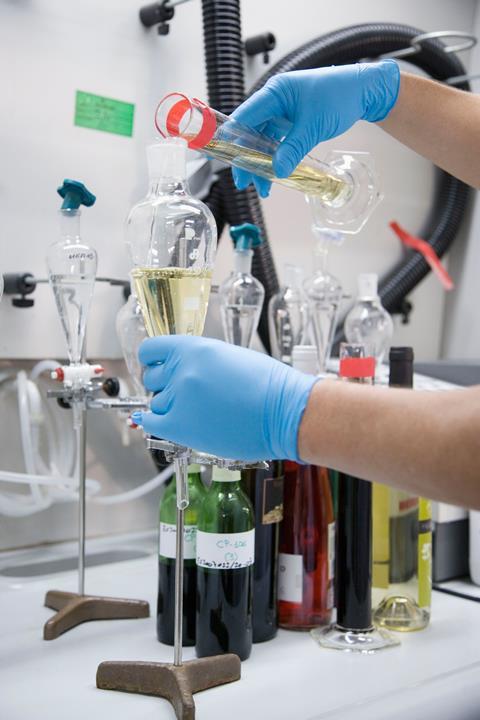
These molecules are typically found in Sauvignon blanc from New Zealand at several-fold higher concentrations that in the same variety produced elsewhere, and when scientists went looking for the reason they found an unexpectedly complicated story. It is due to a series of happy accidents in New Zealand’s unique environment for growing and processing Sauvignon blanc grapes, explains Waterhouse.
Firstly, their precursor – a linolenic acid – is more prevalent in Sauvignon blanc grapes grown in New Zealand than those in warmer climates. ‘Under cool climate conditions, cell membranes tend to have more unsaturated lipids in order to maintain the integrity of their lipid bilayer,’ Waterhouse says. Secondly, a lack of manual labour in New Zealand means grapes are normally harvested by machine. The grape berries are bashed off the vine with a plastic beater bar and drop down onto a moving conveyer belt below. ‘It’s a rather violent process,’ says Waterhouse, which tends to break open the grapes. Once open to the air, the lipid precursor very rapidly oxidises (within a minute or so) to form the six-carbon α,β-unsaturated aldehyde.
The carbon–carbon double bond in this molecule then reacts with a sulfur-containing nucleophile, inserting a sulfur-containing group in the C3 position. According to Waterhouse the identity of this nucleophile is still being determined but it is probably glutathione, a natural antioxidant in grapes, or sulfite, which is routinely sprayed onto machine-harvested grapes before they leave vineyards to prevent oxidation (see box Oxidation fundamentals below). When Waterhouse started exploring this passionfruit flavour in New Zealand Sauvignon blanc he had no idea that some oxidation was needed.
The grapes are then taken into the winery where they undergo the standard white wine-making process – crushing, decanting and then fermenting with yeast. The yeast transforms the aldehyde to an alcohol and the sulfur-containing group into a thiol, Waterhouse explains. ‘The yeast also converts some of the alcohol to the acetate ester, so you end up with 3-mercaptohexanol and the 3-mercaptohexyl acetate that give the wine its distinctive flavour.’
Uncovering the science behind their wine has allowed New Zealand producers tight control over the flavour of the Sauvignon blanc they produce. Hand-harvesting can be avoided, the length of skin to juice contact during pressing boosted and yeast strains that are particularly good at putting on acetate groups selected, for example. The storage of the finished wine has also changed. During ageing the acetate group tends to hydrolyse, upsetting the perfect balance of flavour molecules present in the wine at bottling, says Waterhouse. ‘Once that was understood, New Zealand winemakers started to keep their wines very cold until they were sold, because you can slow the process of hydrolysis by lowering the temperature.’
Oxidation fundamentals
Winemakers have a complicated relationship with oxygen, explains US wine chemist Andrew Waterhouse from the University of California, Davis. ‘Traditionally, oxygen was viewed as the enemy of winemaking because the technology available until around hundred years ago couldn’t keep oxygen out.’ Wine that was more than a year old at that time would taste like vinegar.
Today, it is possible to almost completely exclude oxygen from the wine making and storage process. But this isn’t always wanted as oxygen can drive the formation of some desirable flavour molecules. ‘Winemakers have had to learn how to control the use of oxygen in winemaking,’ says Waterhouse. Since the mid-1990s, for example, the controlled addition of oxygen – known as microoxygenation – has been widely practiced. ‘In Cabernet sauvignon, for example, it diminishes the vegetable, bell pepper aroma and you ended up with fruitier tasting wines,’ Waterhouse says. ‘There’s been a lot of interest in understanding the reactions that are occurring. It’s very complicated because there are so many components in wine and they can all react in different ways.’
Another chemist looking into this is UK-based John Danilewicz. Prior to his ‘retirement’ 20 years ago, Danilewicz was a drug discovery chemist for the pharmaceutical giant Pfizer at their Sandwich site in Kent. When he left Pfizer, Danilewicz planted a small commercial vineyard nearby and built a winery, which he recently sold. He also set up a still-operational wine chemistry research lab in his garden at home. Here, he studies the mechanism of wine oxidation. ‘I am very interested in the mechanism of oxidation because oxygen doesn’t react directly with any wine components; its reactions are catalysed by iron, which is always present in small amounts in wine,’ Danilewicz explains. ‘Iron(II) is first oxidised by oxygen in single electron transfer steps to produce iron(III). This is the oxidant that oxidises various things in wine, the polyphenols and so on.’
He is also working to improve fundamental understanding of how sulfite works. It is routinely added to wines to prevent oxidation at various stages in the production process and finally to finished wine. Danilewicz’s ultimate goal is seeing sulfite used more scientifically to improve wine quality.
Cracking the pepper mystery
Another distinctive wine flavour that has been under the microscope is the cracked black pepper character in Shiraz grown in cool climates. ‘Until recently we didn’t know what the chemical was that causes the black pepper flavour in cool climate Shiraz,’ explains Leigh Francis, a wine chemist at the Australian Wine Research Institute in Adelaide. The quest was made harder by the molecule’s high bioactivity in the wine – some people can detect it at just 16ppt.
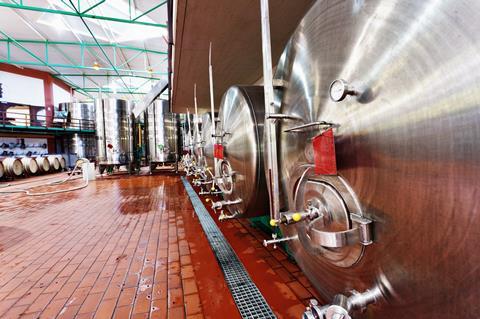
In 2008, Francis’s colleagues used gas chromatography–mass spectrometry (GC–MS) paired with a panel of expert human sniffers to identify the molecule as the sesquiterpene rotundone. ‘We discovered that it had been reported previously in the nut grass Cyperus rotundus but it hadn’t previously been recognised as a flavour compound,’ he says. Later research found that rotundone is prevalent in black peppercorns and many other herbs and spices. It is also – unusually for a wine flavour compound – also present in grapes.
Further work by Francis’s team found that rotundone concentrations increase as grapes mature. Shiraz producers are therefore starting to consider how peppery they want their wine when deciding when to start harvesting grapes.
The scientists have also been looking at how rotundone levels can vary across individual vineyards. ‘It’s well known that vineyards are not necessarily uniform,’ explains Francis. ‘Even if it looks visually identical, is planted with the same material and grown in the same way, certain areas can produce a darker-coloured or different-flavoured wine.’ This flavour variation means that some winemakers harvest their vineyards in parcels; grouping together rows of vines that ripen at similar times.
Francis’s team have been working with some wineries to better inform this so-called batching process, by mapping the concentration of rotundone in Shiraz grape berries across their vineyards. The Mount Langi Ghiran vineyard in neighbouring Australian state Victoria has very high levels of rotundone, and they found a 50-fold variation in concentrations in a six hectare area. The team found that the level variations strongly correlated with light levels. ‘Vines with more shading had high levels of this pepper compound,’ explains Francis.
Find the perfect blend
Damien Sheehan, viticulturist and general manager at Mount Langi Ghiran, explains that before working with Francis they picked the six hectares used to produce their flagship wine in just two or three separate batches. ‘We would start at one end of the row and go all the way to the other end of the row and then keep working along. It was fairly crude. Now we pick as many as 13 separate parcels of fruit out of that block and do separate ferments with each of those parcels.’ The result, he explains, is a higher quality wine. His team are now picking fruit that contains the concentration of rotundone that best suits their buyer’s tastes. Some wineries have also started to change canopy management strategies to manipulate rotundone levels.
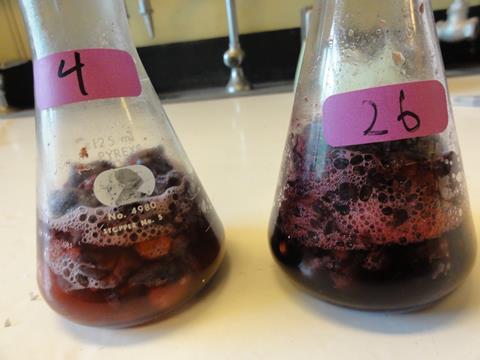
Cool climate Shiraz and Sauvignon blanc may have one or two dominant flavour compounds, but this is unusual. It’s normally combinations of compounds that give wine varieties their unique flavours, Francis explains. His team is currently exploring the origin of the apricot and peach flavours in Chardonnay and some other white wines. Earlier gas chromatography paired with human sniffing work didn’t find a single common aroma compound responsible for this so-called stone-fruit character – a mixture was suspected instead. In 2018, Francis’s team reported that using a sensory reconstitution study they had determined that it is a mixture of monoterpenes and lactones that gives rise to this stone-fruit flavour. ‘Once you think you’ve identified what the compounds are, they are added to a neutral medium to see if the character can be reproduced,’ explains Francis. ‘This reconstitution step hasn’t been done very much in wine research so far.’
Another approach being taken to unpick mixtures of flavour compounds in wine is to ‘delete’ individual molecules from an artificial wine matrix and see how the flavour changes. ‘The method involves removing an individual component from a known mixture of aroma chemicals and see how it contributes to the mix,’ explains Waterhouse. ‘Understanding the interaction of all these aroma components and how they affect each other in a mixture has become a major area of study in wine, and more broadly in sensory science.’
Established analytical tools
Today, analytical chemistry is routinely used in almost all wineries throughout the winemaking process. Mark Barnes monitors the sugar and acidity content of his grapes during the ripening process to help decide when to pick them. He is the chief winemaker and general manager at the eight-hectare vineyard Chilford Hall near Cambridge in the UK. He uses a handheld refractometer to measure specific gravity and from that the sugar content and estimated alcohol level is calculated. ‘It tells us what the alcohol level will be if all of the sugar in the grapes is converted to alcohol,’ says Barnes. A titration is used to determine the total acidity in the grapes, which acts as a proxy for determining how tart the resulting wine will be.

Larger wineries are starting to invest in small infrared and ultraviolet/visible spectroscopy machines able to measure sugar and alcohol levels in grapes and other useful high-tech analytical tools which allow a more thorough examination of grape juice and wine, explains Gavin Sacks, wine chemist at Cornell University in the US. Contract analytical laboratories also offer a range of different grape tests, says Eric Hervé from the independent US wine lab ETS in California. The most popular test among his clients is for total levels of nitrogen-containing compounds such as ammonium salts and primary amino acids. Nitrogen nutrients can be added to a fermentation tank if these so-called yeast assimilable nitrogen levels in the grapes are found to be too low – which can happen if grapes are overripe at harvest. Low nitrogen levels can lead to fermentations getting stuck or the yeast producing excessive amounts of rotten-egg-smelling hydrogen sulfide.
Chilford Hall uses it’s refractometer during the yeast fermentation – a standard approach to determining when all the sugar has been converted into alcohol. For those wanting more detail about residual sugar content, enzymatic methods for determining glucose–fructose ratios are possible, explains Hervé. Ferment destined to become red wine then undergoes a second fermentation. Here malolactic bacteria convert malic acid to the less acidic lactic acid, explaining why red wines tend to taste less acidic than most whites.
Sulfite levels are another typical measurement during the wine making process. As a natural byproduct of fermentation, sulfite is present in all wine. But its levels are also artificially boosted at various stages in the production process to slow down oxidation spoilage (see box 1). Titration is a typical tool for checking sulfite levels.
As a member of the EU Quality Wine Scheme, Chilford Hall must also check metal levels and protein stability of their wines before bottling. ‘If a wine isn’t protein stabilised and becomes warm, it can throw a haze of protein around it and you get little cotton wool balls developing on the sides of the bottles,’ Barnes explains. ‘It’s absolutely fine to drink but people don’t like the look.’
Wines labs such as ETS offer a host of tests aimed at diagnosing off-flavours in wine, explains Hervé. Smoke-taint is a growing issue. ‘It gives an odour to wine that makes you think of a fire pit,’ he explains. ‘In the worst case scenario, the wine leaves an aftertaste that makes you think you licked an ashtray.’ His lab uses gas chromatography–mass spectrometry to test for the primary markers of smoke taint, guaiacol and 4-methylguaiacol, both in grapes or after yeast fermentation.
AOC, IGP, GC–MS?
Today, most winemakers embrace the use of science to improve their wine – although many still tend to hide it behind the scenes of a very traditionally presented product. Most wineries carry out simple chemical analyses in-house, such as sugar and acid levels (see box above). Larger wineries often have the tools for more in-depth chemical analyses. For any other necessary tests there are specialist contract laboratories. But there is currently no rapid way for low-level aroma molecules or their precursors to be detected. Sacks is working to develop one. He envisages this being used in large commercial wineries, to help determine which grapes should be fermented together. ‘At large wineries during harvest, tons of grapes arrive from different vineyards to go into tanks every 15–30 minutes. One of the most important decisions a winemaker has to make is to figure out which of these grapes are going to ferment with which other grapes,’ he explains.
This job has enhanced my enjoyment of wine
The current gold standard for low level volatile measurements in other industries is GC–MS, which typically takes 30–60 minutes per sample. ‘We would like to drop that down to 30–60 seconds per analysis,’ Sacks explains. His tool of choice is ambient ionisation mass spectrometry (Aims), which ionises samples outside the machine and then sucks them inside for analysis. It can sniff molecules coming off whole grapes or a few millilitres of grape juice or wine. But because flavour molecules tend to be at low levels, their signals are often lost in the noise of those from wine’s much larger chemical constituents. Sacks’s lab is developing a simple sample preparation step to overcome this.
‘We load up our samples in a multi-well plate and position a sorbent polymer film over the top,’ he says. This creates a volatile ‘image’ of the samples on the film that is then passed in front of the Aims detector to enable the amount of each odorant to be quantified. Sack’s can sniff out six aroma molecules in less than 30 seconds in his lab – but plans to increase this number to around a dozen. His approach will shortly be tested at the E & J Gallo winery in California, one of the largest in the US. ‘Hopefully by the end of next harvest [2019], we will have a clear idea about whether or not this is an appropriate technique for routine industry use,’ he says.
The wine chemists interviewed for this article all agreed that theirs was a dream job, allowing them to combine a love of chemical research with their favourite tipple. ‘This job has enhanced my enjoyment of wine because when I taste different wines I can understand what I taste on a different level,’ explains Waterhouse. ‘If there are other chemists around, we’ll talk about a wine’s flavour in terms of chemical components. But if I’m not with chemists, I’m not going to do that, because I want to be polite!’
Nina Notman is a science writer based in Salisbury, UK


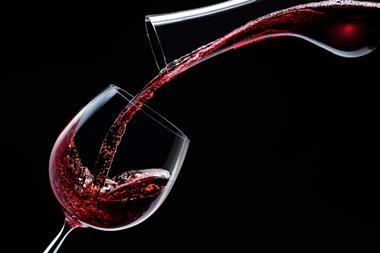
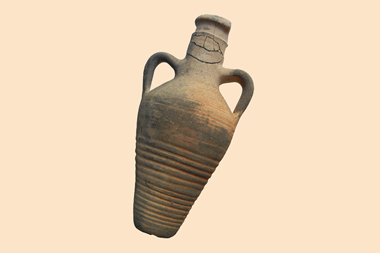









No comments yet